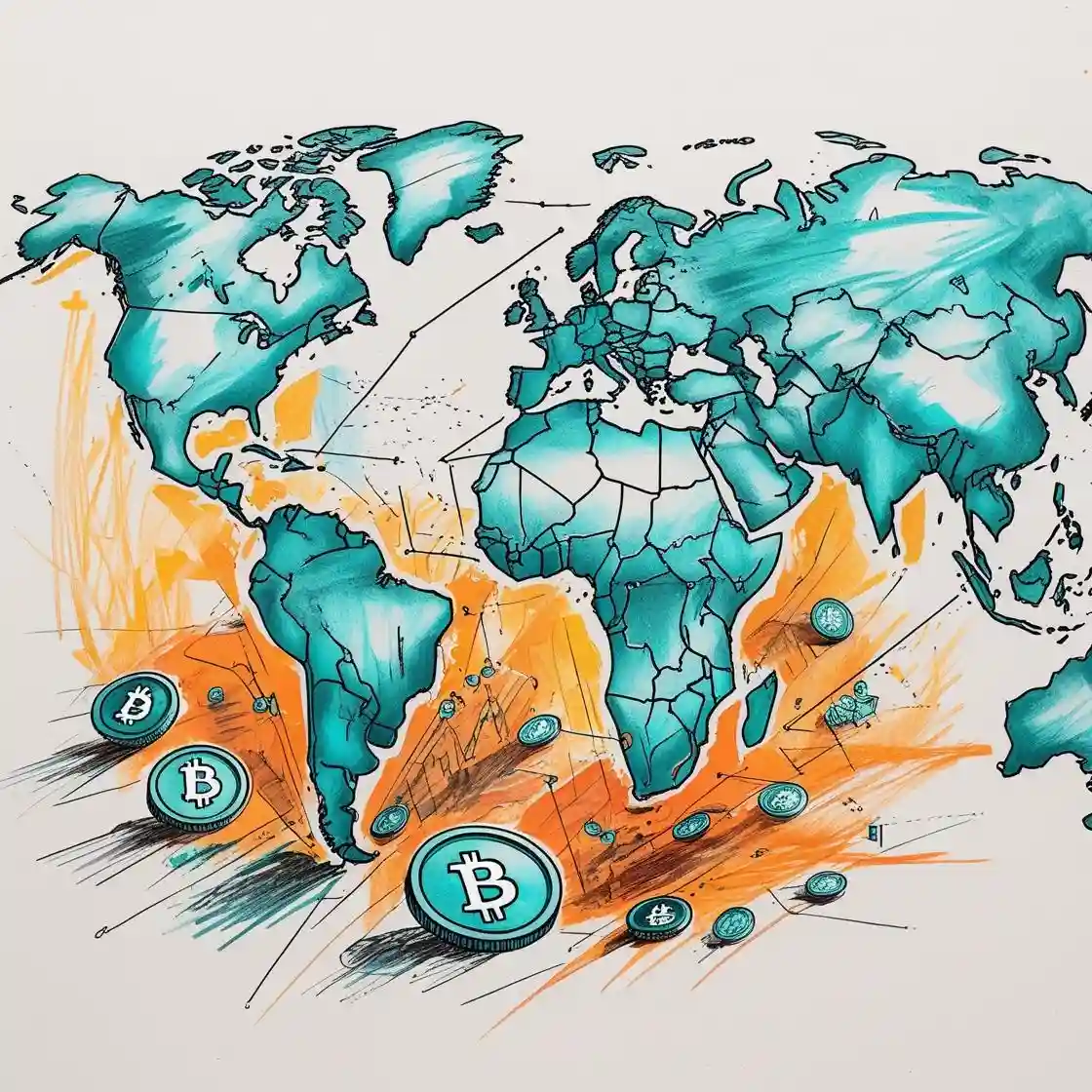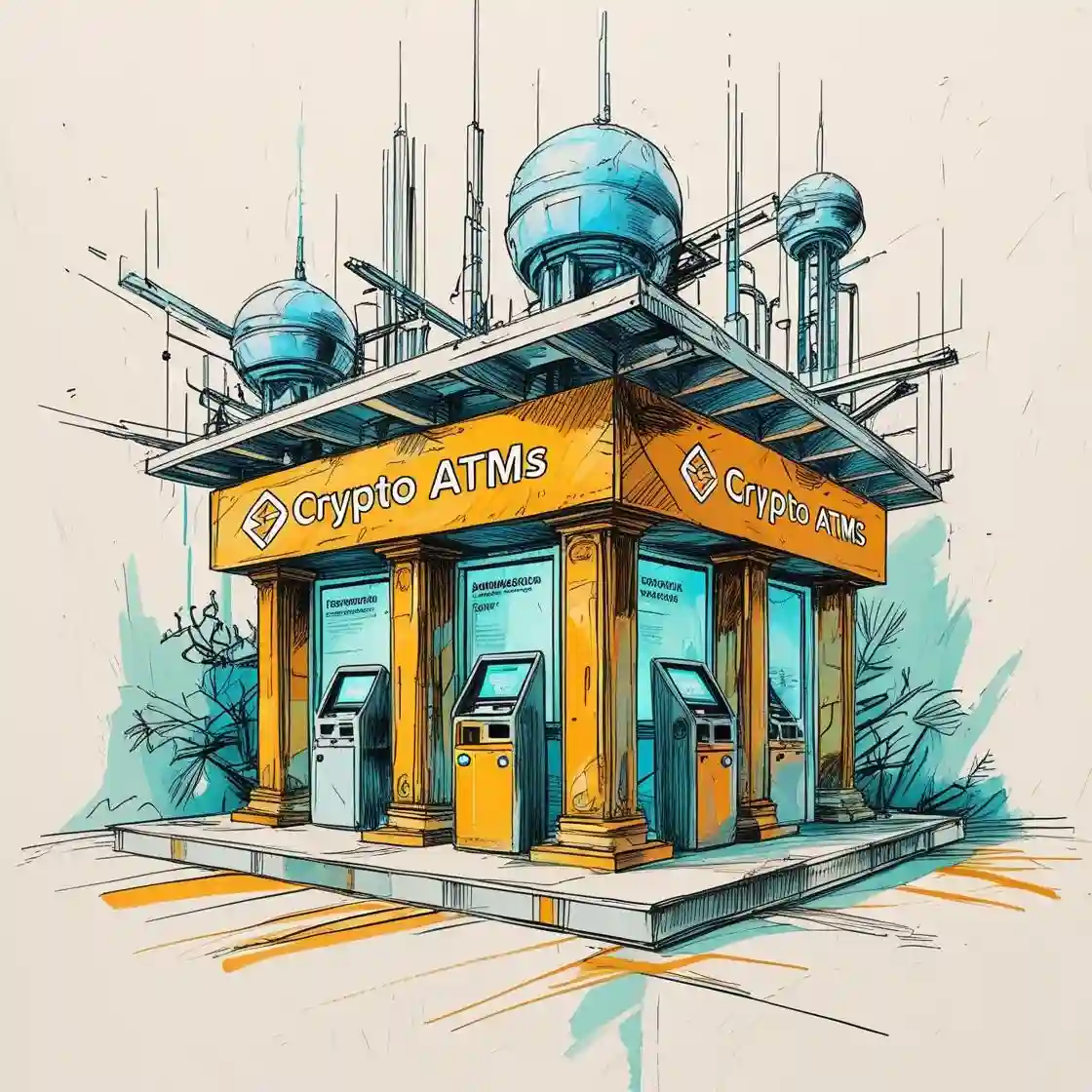Digital Remittances Surge in Latin America - The Stablecoin Revolution of 2025

Latin America's financial landscape is undergoing a seismic shift as digital remittances surge by over 40%, fundamentally transforming how millions of families receive money from abroad. This isn't just about fancy technology or investment speculation - it's about real people finding practical solutions to everyday problems like expensive transfer fees, currency crashes, and banking barriers that have plagued the region for decades.
Crypto Remittances in Amazon
How cryptocurrency remittances are transforming life in the Amazon jungle - real examples from Peru
Explore Crypto ImpactBlockchain for Jungle Protection
Innovative blockchain technology initiatives protecting Peru's rainforests through sustainable development
Discover Blockchain SolutionsExecutive Summary
The numbers tell a remarkable story of transformation. Cryptocurrency remittances in Latin America have surged by over 40% in 2024, marking one of the most significant shifts in how money moves across borders in the region's history.
If current trends continue, the region will receive $161 billion in remittances in 2024, a 5% increase compared to 2023. What's even more striking is that Latin America represents 9.1% of cryptocurrency value received between July 2023 and June 2024, receiving nearly $415 billion in cryptocurrency during this time period.
The real game-changer? Stablecoins like USDT and USDC have become the dominant force, accounting for over 90% of all crypto transactions in many markets. This isn't about speculative Bitcoin trading anymore - it's about people using digital dollars as a practical tool for savings and transfers in countries where local currencies can lose value overnight.
The $161 Billion Remittance Market - Latin America's Digital Transformation
Key Statistics and Growth Drivers
Let's put this in perspective. In 2024 remittances sent to Latin America and the Caribbean represented 2.3% of the regional Gross Domestic Product (GDP), reaching 160.9 billion dollars. In countries such as El Salvador, Guatemala, Nicaragua, and Honduras, that percentage reaches up to 26%. For these countries, remittances aren't just helpful - they're absolutely essential for economic survival.
The shift toward digital solutions makes perfect sense when you look at the costs. Traditional banks can charge astronomical fees. The global average of 6.2% to send $200, and banks can charge up to 12.1%. Compare that to crypto: Sending Bitcoin to another wallet costs an average of $1.50 per transaction, and Ethereum costs an average of $0.75 per transaction for any amount, with crypto transaction fees typically ranging from 1% to 3%.
Think about what this means for a family receiving $300 per month. With traditional banking, they might lose $36 in fees. With crypto, it's just $9. That extra $27 can cover a week's worth of groceries in many Latin American communities.
The estimated slowdown for this year is attributed to the combination of lower human mobility in 2023 with slower labor market growth for migrants abroad, coupled with a relative improvement in the economies of Central American and Mexican recipient countries. Meanwhile, devaluations in South American countries and a slower economic recovery have encouraged sending remittances to support families in this subregion.
Country-by-Country Breakdown
The remittance landscape varies dramatically across Latin America, with each country facing unique challenges and opportunities.
Mexico stands out as the giant. Mexico is the second country that receives the most remittances worldwide, after India, exceeding 64 billion dollars in 2024. Mexico is the world's second-biggest receiver of remittances, with an estimated $61 billion flowing into the country from overseas per year, mostly from the United States. Bitso, one of the region's largest crypto platforms, processed over $3.3 billion in crypto remittances sent from the U.S to Mexico in 2022.
Brazil presents a different picture with its focus on institutional crypto adoption. The country has seen explosive growth in crypto imports. Brazil hit a new milestone in 2024, with crypto imports rocketing up 60.7% from last year, totaling $12.9 billion by September. Even more impressive, stablecoins are the driving force behind Brazil's crypto spike, now accounting for nearly 70% of all crypto transactions there.
Meanwhile, the South American region will see a 9.1% growth in remittance income, totaling $31.7 billion. Finally, Caribbean countries will receive $18.4 billion, with a 2% growth.
Stablecoins Leading the Charge - USDT and USDC Dominate Transfers
Why Stablecoins Over Traditional Crypto
The dominance of stablecoins isn't accidental - it's a direct response to real-world needs. People in Latin America aren't looking to gamble on volatile cryptocurrencies. They need something stable, reliable, and practical for everyday use.
Argentina's stablecoin market is among the leaders in the Latin America region, with Argentina's share of stablecoin transaction volume at 61.8%, placing it slightly above Brazil's share at 59.8% and well above the global average of 44.7%.
The preference for stablecoins reflects practical reality. Imagine receiving your salary in Bitcoin - one day you can afford rent, the next day you can't because the price crashed 20%. That's why stablecoins have taken over. They offer the benefits of digital currency (fast, cheap transfers) without the heart-stopping volatility.
Transaction Volume Analysis
The scale of stablecoin adoption has reached unprecedented levels. Trading volumes on Latin American exchanges have exploded - increasing ninefold from $3 billion in 2021 to $27 billion in 2024. That's not a typo - it's a 900% increase in just three years.
USDT and USDC together accounted for 39% of total purchases on major platforms in 2024. These stablecoins serve as a store of value for Latin American citizens grappling with difficult macroeconomic conditions, including high inflation and currency devaluation.
Year-over-year stablecoin transaction value on local exchanges has increased by 207.7%, significantly more than Bitcoin, Ether, and altcoins. Stablecoins now account for approximately 70% of the share of indirect flows from Brazil's local exchanges to global exchanges.

Country Spotlights - Where Crypto Remittances Are Thriving
Brazil - The $12.9 Billion Crypto Import Leader
Brazil isn't just participating in the crypto revolution - it's leading it. Brazil's net imports of crypto assets have surged by over 60% in the first nine months of 2024 compared to the same period last year, according to the country's central bank. Total imports reached $12.9 billion through September, already exceeding the $11.7 billion recorded for all of 2023.
The sophistication of Brazil's market is particularly impressive. The monthly value of institutional-sized transactions (those greater than $1 million) increased by approximately 29.2% between the last two quarters of 2023, and approximately 48.4% between Q4 of 2023 and Q1 of 2024.
But it's not just big players. Regular Brazilians are embracing digital payments at an extraordinary rate. Local payment apps are processing tens of thousands of transactions weekly, with platforms successfully moving millions of dollars through integrations with Brazil's PIX payment system - essentially creating a bridge between traditional banking and crypto that works seamlessly for everyday users.
Argentina - Inflation Hedge Through Digital Dollars
Argentina's relationship with stablecoins is perhaps the most dramatic in the region. When your local currency loses half its value in a year, finding alternatives isn't a luxury - it's survival.
In Argentina, where annual inflation hit 143% in late 2024, the appeal of stablecoins is obvious. As one local put it: "You can walk up to any Argentinian person and ask how many pesos to a dollar, and they'll know. As crypto adoption has grown, lots of people here will now get their paycheck and immediately put it into USDT or USDC."
The numbers back this up. About 5 million Argentinians out of a total population of 45.8 million use crypto, with 2 million of them on just one platform alone. On Bitso, Argentina's users showed remarkable preference for stability - USDT and USDC accounted for 72% of all crypto purchases in the country.
Peru - Rural Communities Embrace USDT Transfers
Peru represents a fascinating case study in grassroots adoption. While Peru might not grab headlines like Brazil or Argentina, something interesting is happening in its rural areas and border regions.
Small merchants and informal traders have discovered that USDT offers something traditional banking never could - a way to save and transfer money without needing a bank account or dealing with currency exchange headaches. In border areas where people regularly deal with multiple currencies, stablecoins have become the simplest solution.
Colombia - 48% Stablecoin Adoption Rate
People in Colombia used cryptocurrencies more often than they did in Brazil or other Latin American nations to buy more coins. On major exchanges, Colombia shows impressive stablecoin adoption, with nearly half of all purchases being stable digital currencies.
The Colombian government has taken a relatively progressive approach to crypto regulation, creating an environment where innovation can flourish while maintaining consumer protection. This balance, combined with high smartphone penetration rates and a young, tech-savvy population, has created perfect conditions for crypto remittance growth.
Blockchain for Jungle Protection
Innovative blockchain technology initiatives protecting Peru's rainforests through sustainable development
Explore Blockchain SolutionsPeru Expats Complete Guide 2025
Comprehensive guide covering all pros and cons of living in Peru as an expat - everything you need to know
Read Expat GuideInfrastructure Revolution - Crypto ATMs and Payment Rails
68.8% CAGR in Crypto ATM Deployment
The physical infrastructure supporting crypto adoption is expanding at breakneck speed. The Latin American crypto ATM market is expected to reach $232.7 million by 2030, growing at an incredible compound annual rate of 68.8% from 2024 to 2030.
In Brazil, crypto ATMs are popping up in shopping malls across the country. One mall franchise announced plans to deploy 15 crypto ATMs offering 30 different currencies, including Bitcoin, Ethereum, Litecoin, and XRP. These aren't hidden in back alleys - they're right there next to traditional ATMs in major shopping centers.
Mexico City alone has 48 Bitcoin ATMs, with installations expanding rapidly to other major cities and tourist destinations. You can now find crypto ATMs in Monterrey, Guadalajara, and beach towns like Tulum and Playa del Carmen - anywhere tourists and locals need quick access to digital currencies.
Integration with National Payment Systems
The real breakthrough isn't just having more crypto ATMs - it's how crypto is integrating with existing payment systems that people already know and trust.
Brazil's PIX and Mexico's SPEI are instant payment systems created by their central banks, and now major crypto companies are connecting directly to these systems. This means you can move money from crypto to your regular bank account instantly, 24/7, without the traditional banking delays.
Payment apps are making this even simpler. Platforms are processing nearly $60 million in volume by creating seamless bridges between crypto and local economies. Users can hold stablecoin balances, earn interest on their savings, and spend their digital dollars with debit cards at any regular store - all from one simple app.
Regulatory Landscape - Compliance and Innovation
Brazil's Progressive Framework
Brazil has emerged as the regulatory leader in Latin America's crypto space. The country is attracting major international players due to its clear regulatory framework and pro-innovation policies, with additional business-friendly rule-making expected in the near future.
The country is creating what many consider the gold standard for crypto regulation in emerging markets. Brazil's Central Bank is working on comprehensive frameworks that provide clarity and full guarantees while also developing DREX, a digital version of the Brazilian real. This shows remarkable sophistication - instead of fighting crypto, Brazil is embracing it while maintaining appropriate safeguards.
Major traditional financial players are taking notice. Mercado Pago, the digital bank unit of Latin America's largest company, launched its own dollar-backed stablecoin in Brazil. When established financial institutions start creating their own stablecoins, you know the technology has gone mainstream.
Challenges and Opportunities
Despite progress, challenges remain. Each country faces unique regulatory hurdles that reflect their political and economic realities.
In Mexico, the 2018 Fintech Law created a framework for electronic payment tokens, but comprehensive crypto regulation is still evolving. One major Mexican bank even considered launching a peso stablecoin, though it hasn't happened yet. The regulatory environment remains somewhat uncertain, creating both opportunities and risks for innovators.
Venezuela's year-over-year growth of 110% far exceeds that of any other country in the region, driven by Venezuelans seeking cryptocurrency to combat the plummeting value of the Venezuelan bolívar. Ordinary Venezuelans continue to seek stable stores of value and hedges against the country's economic crisis.
Argentina faces its own complexities. Despite rampant inflation driving massive stablecoin adoption, the government has considered various regulatory approaches to prevent capital flight. So far, crypto remains in a gray zone - highly used but not fully regulated, creating an interesting dynamic where adoption races ahead of legislation.

Future Outlook - Projections for 2026-2030
Market Size Predictions
The future looks extraordinarily bright for crypto remittances in Latin America. Industry projections suggest the Latin American cryptocurrency market could reach $442.6 billion by 2033, growing at nearly 11% annually. This would represent a market nearly tripling in size over the next eight years.
Several factors support these optimistic projections. High inflation continues to drive demand for stable alternatives to local currencies. The young, tech-savvy population is comfortable with digital solutions. And perhaps most importantly, the infrastructure is now in place - from crypto ATMs to integrated payment systems - making adoption easier than ever.
Stablecoins specifically show even more dramatic growth potential. They've already grown from 60% of exchange volume in 2022 to over 90% in 2025. As more people discover that they can hold digital dollars that don't lose value to inflation, adoption will likely accelerate further.
Technology Integration Trends
The technological evolution of crypto remittances is accelerating rapidly. Financial institutions in countries like Brazil are investing heavily in innovative software solutions, integrating cutting-edge technologies like AI, blockchain, and big data into their products.
Layer 2 solutions and alternative blockchains are making transactions even cheaper and faster. New blockchain corridors are emerging for local stablecoins, providing more options and redundancy for users. The Lightning Network is enabling near-instant Bitcoin transfers with minimal fees across the region.
Looking ahead, several key trends will shape the market:
Central Bank Digital Currencies (CBDCs): Brazil's digital real pilot could formalize stablecoin usage within robust payment system regulations, creating a hybrid model that combines government oversight with crypto innovation.
Institutional Adoption: Major banks and financial institutions are increasingly embracing crypto infrastructure. Major payment processors are partnering with Latin America's largest crypto exchanges to enhance cross-border payments, showing how traditional finance is merging with crypto innovation.
DeFi Integration: Decentralized Finance is gaining momentum, providing lending, borrowing, and trading services without traditional intermediaries. This could revolutionize how people access financial services in underserved communities.
Enhanced User Experience: The focus is shifting to making crypto as easy to use as traditional banking apps. New platforms offer one-click conversions, instant transfers, and intuitive interfaces that hide the complexity of blockchain technology.
Agriculture in Peru
Explore the prospects and challenges of agricultural development in Peru's diverse climate zones
Discover Agriculture InsightsBusiness in Peru: Pros and Cons
Comprehensive analysis of advantages and challenges of doing business in Peru's growing economy
Read Business AnalysisPractical Implications and Real-World Impact
Let's talk about what this actually means for real families. Remittance amounts range from $131 to $648 monthly, representing between 6% and 23% of migrants' incomes. More than half of migrants report sending money to their mothers, and one in three sends money to their fathers. Among men, the median remittance sent is $300 monthly and this amount remains stable during the first 15 years. For women, the rate of income allocated to remittances remains stable over time, leading to increased amounts sent over the years.
The cost savings translate directly into improved living standards. The World Bank estimates that reducing the cost of sending remittances by 5% can save up to $16 billion annually. For a family receiving $300 monthly, switching from traditional to crypto transfers could mean an extra $324 per year - enough to cover school supplies, medical expenses, or home improvements.
In Venezuela, where about 25% of the population has left the country since 2014 due to the complex humanitarian emergency, remittances have turned into a huge part of Venezuela's economy, with many turning to stablecoins as an alternative way of fulfilling this need.
The Unstoppable Rise of Digital Remittances
The digital remittance revolution in Latin America represents more than a technological shift - it's a fundamental reimagining of how money moves across borders, how families support each other, and how people protect their savings from economic instability.
Latin America is the second fastest growing region for crypto adoption this year, with a year-over-year growth rate of approximately 42.5%. Four of the top 20 countries in the Global Crypto Adoption Index are in Latin America: Brazil at 9th place, Mexico at 13th, Venezuela at 14th, and Argentina at 15th.
This isn't about early adopters or tech enthusiasts anymore. It's about millions of ordinary people - construction workers in the US sending money home to Mexico, families in Argentina protecting their savings from inflation, small business owners in Peru accepting payments from customers abroad. They're not interested in crypto speculation; they're using digital currencies as practical tools to solve real problems.
As we look toward 2030, the trajectory is clear. Digital remittances will continue growing exponentially. Stablecoins will further cement their dominance. Traditional financial institutions will scramble to adapt or risk becoming irrelevant. And Latin America, once considered a developing market, will likely serve as the model for financial innovation worldwide.
For businesses, the message is unmistakable: adapt now or be left behind. For policymakers, the challenge is to create frameworks that protect consumers while fostering innovation. For families across Latin America, the promise is simple but profound: faster, cheaper, and more reliable ways to support loved ones and build financial security.
The stablecoin revolution in Latin America isn't just changing how money moves - it's changing lives, empowering families, and reshaping entire economies. The digital remittance surge isn't a trend or a bubble. It's the new normal, and it's just getting started.
Frequently Asked Questions (FAQ)
What exactly are stablecoins and why do Latin Americans prefer them?
Stablecoins are cryptocurrencies pegged to stable assets like the US dollar, maintaining a consistent value. Latin Americans prefer them because they offer protection against local currency devaluation (which can be extreme, like Argentina's 143% inflation) while avoiding Bitcoin's wild price swings. It's like having US dollars in digital form - stable, reliable, and accessible without a bank account.
How much can families really save using crypto remittances?
The savings are substantial. Traditional banks charge up to 12.1% in fees, while crypto transfers cost just 1-3%. On a typical $300 monthly transfer, families save $20-30 per transaction. That's $240-360 per year - money that can cover essential expenses like healthcare, education, or food.
Which Latin American countries are leading crypto adoption?
Brazil leads in volume with $12.9 billion in crypto imports through September 2024. Venezuela shows the fastest growth at 110% year-over-year. Argentina has 61.8% of transactions in stablecoins due to extreme inflation. Mexico receives over $61 billion in total remittances annually, with billions already flowing through crypto channels.
Is it legal to use crypto for remittances in Latin America?
Yes, in most countries it's legal, though regulations vary. Brazil has progressive frameworks and is even developing its own digital currency. Mexico recognizes crypto as virtual assets under its 2018 Fintech Law. Argentina operates in a regulatory gray zone but has massive adoption. Only a few countries have restrictions, and even those are evolving rapidly.
What do I need to start receiving crypto remittances?
You need surprisingly little: a smartphone with internet access, a crypto wallet app (many are free), and basic identity verification on most platforms. The entire setup usually takes less than an hour. Many platforms now offer Spanish/Portuguese support and integrate with local payment systems like Brazil's PIX, making it as easy as using a regular banking app.
Sources
-
Chainalysis - 2024 LATAM Crypto Adoption: The Rise of Stablecoins https://www.chainalysis.com/blog/2024-latin-america-crypto-adoption/
-
Inter-American Dialogue - Assessing Cryptocurrency in Remittances to Latin America https://thedialogue.org/blogs/2024/09/assessing-cryptocurrency-in-remittances-to-latin-america-and-the-caribbean
-
Digital Watch Observatory - Latin America Crypto Remittances Growth 2024 https://dig.watch/updates/latin-america-leads-growth-in-crypto-remittances-this-year
-
Cointribune - Remittances Boosting Cryptocurrencies in Latin America https://www.cointribune.com/en/use-of-remittances-boosts-cryptocurrencies-in-latin-america/
-
Crypto for Innovation - 10 Facts About Remittances and Crypto https://cryptoforinnovation.org/10-facts-that-will-change-your-mind-about-remittances-and-crypto/
-
Chainalysis - Latin America Cryptocurrency Adoption Data and Analysis https://www.chainalysis.com/blog/latin-america-cryptocurrency-adoption/
-
Inter-American Development Bank - Remittances to Latin America 2024 https://www.iadb.org/en/news/remittances-latin-america-and-caribbean-moderate-their-growth-2024
-
Statista - Cryptocurrency Use in Latin America 2024 https://www.statista.com/statistics/1538113/cryptocurrency-use-for-crypto-in-latin-america/
-
Finimize - Brazil Sets Record With Rising Crypto Imports in 2024 https://finimize.com/content/brazil-sets-record-with-rising-crypto-imports-in-2024
-
Yahoo Finance - Brazil Crypto Imports Surge 60.7% https://finance.yahoo.com/news/brazil-crypto-imports-surge-60-153636452.html
-
Digital Watch - Brazil's Booming Crypto Market https://dig.watch/updates/brazils-booming-crypto-market-surpasses-2023-totals
-
Cointelegraph - Brazil's Crypto Imports Surged 40% in September https://cointelegraph.com/news/brazil-crypto-imports-surge-september
-
Financial IT - Bitso USD Transfer Service for Mexico and Argentina https://financialit.net/news/payments/bitso-introduces-new-service-enabling-us-dollar-transfers-users-mexico-and-argentina
-
Bitget - Bitso Launches MXNB Stablecoin https://www.bitget.site/news/detail/12560604667368
-
Cryptonomist - Stablecoins on Bitso Platform Analysis https://en.cryptonomist.ch/2025/08/22/the-power-of-stablecoins-on-bitso-usdc-and-usdt-lead-the-scene/
-
Bitso Blog - Investing in USD in Mexico https://blog.bitso.com/investing-in-usd-in-mexico/
-
Bitso Blog - Send Money to Mexico Securely https://blog.bitso.com/send-money-to-mexico-securely/
-
Electronic Payments International - XDC Network Bitso Remittances https://www.electronicpaymentsinternational.com/news/xdc-network-bitso-us-mexico-remittances/
-
Payments Journal - Mexican Peso Stablecoin Launch https://www.paymentsjournal.com/mexican-peso-stablecoin-launches-to-streamline-cross-border-payments-in-latin-america
